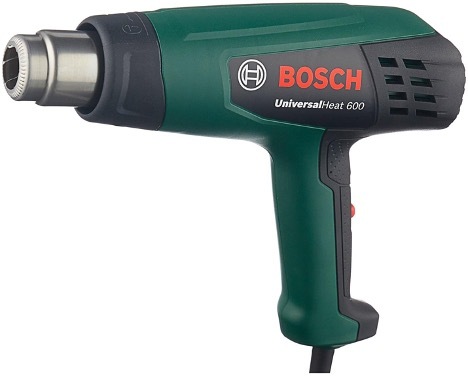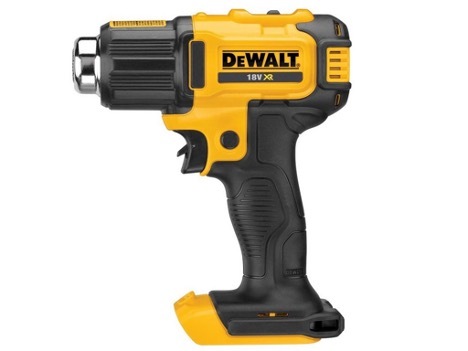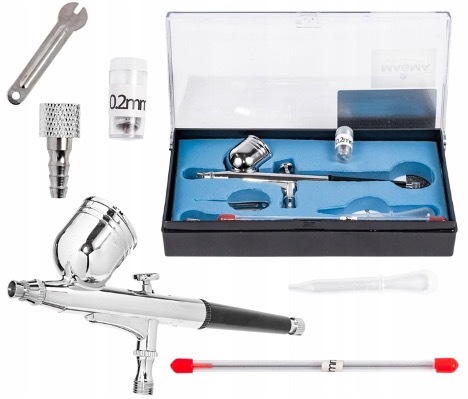There are several proven ways to choose a building hair dryer. The most important thing is to pay attention to the technical characteristics and application tasks. If you buy a home appliance, an average power of 1500 watts is enough. If you plan to use the device for industrial purposes, it is better to choose with an indicator from 1500 to 2500 watts.
The content of the article
-
Main settings
- Tool class
- Temperature
- Power
- Performance
- Other selection criteria
- The main types of nozzles
Main settings
The main parameters of the device include:
- Tool class (types).
- The temperature to which the hair dryer heats up during processing.
- Power, performance.
Tool class
There are 2 classes of tools - hobby and pro. The first ones are quite light in weight, easier to use and cheaper. In addition, they are not so powerful, because they are not designed for large loads.

In practice, they often encounter such a problem: which building hair dryer to choose for professional purposes. To answer the question, it is worth exploring more productive devices. They are distinguished by a greater mass, are able to heat up to a very high level. So, the temperature of an industrial hair dryer can reach 600 ° C. The weight of professional devices is noticeably higher, as is the number of functions. The price is correspondingly higher as well.
In a separate class, an industrial building hair dryer is sometimes chosen. It is characterized by maximum power, and can supply not only hot, but also cold air. It is used for roofing, when laying floor coverings, for welding plastic elements, soldering copper pipes.
Temperature
To understand how to choose a building hair dryer for use at home, it is necessary to take into account the maximum heating temperature:
- household appliances are heated from 50 to 500 ° C;
- professional - up to 600 ° C;
- the maximum temperature to which an industrial-type building dryer heats up reaches 700 ° C.
Power
This is one of the main indicators, which is also worth paying attention to. The heating temperature of the building hair dryer is also associated with it. If the device is powerful enough, it heats up more. But with its help, you can perform almost all types of work.
The indicator is measured in watts. Household appliances have a power of about 500-1500 watts. On an industrial scale, devices with an indicator of 1500-2500 watts are used.
Performance
You can also choose a building hair dryer by performance. The parameter shows how many liters of air flow the device pumps onto the surface per unit of time. Productivity can be from 200 to 750 liters per minute. For domestic purposes, 200-400 l / min is enough. At the same time, the feed rate can be adjusted using a special mechanism, which makes it easier to choose a building hair dryer.
Other selection criteria
If you figure out which is the best building hair dryer for use in the house, you need to choose taking into account the following characteristics:
- Cold air blowing function - it is supplied through another nozzle and contributes to the rapid cooling of the surface.
- The air filter is an inexpensive, but very important part that protects the device from building dust. It is of particular importance in industrial enterprises.
- Another way to choose a technical hair dryer is to consider devices with a temperature control function. It allows you to adjust the indicator in a certain range from 50 to 700 ° C. Moreover, the adjustment can be sharp, for example, only 2 or 3 levels, and digital type - with an interval of 10 ° C. There is also a mechanical regulation, when using the wheel you can smoothly adjust the desired temperature.
- If you think about which building hair dryer to choose for your home, it is best to use models with a display. It allows you to accurately set the temperature.
- It matters how many degrees the building hair dryer heats up, so you should buy tools with overheat protection. It protects it and ensures a longer service life.
- There is also a function to maintain a stable temperature, which makes it easier to work in a particular mode.

It is recommended to choose devices that have a programming option for setting the main operating parameters. If you focus on this indicator, you can understand how to choose the right building hair dryer.
The main types of nozzles
It is very important to study the characteristics of a building hair dryer. But if you choose the wrong nozzles, the device will not work correctly. Today, 7 main varieties of nozzles are produced:
- Since the temperature of an industrial hair dryer reaches 600-700 ° C, a flat nozzle is used. It is used for processing smooth, flat surfaces.
- Reducing is used to supply a narrow stream or as an adapter for special purpose nozzles.
- A cutting nozzle is used to work with foam. At the same time, a lowering nozzle is required.
- Welding - used in conjunction with a step-down. If you need to understand which industrial hair dryer to choose in order to weld the seams of the floor covering, this is the best option.
- The tip of the type of welding is used for the process of welding the seam.
- Reflector type nozzle - used for heating and bending plastic pipes. The material melts easily, so the power of the building hair dryer in this case may be small.
- You may also need a slotted nozzle (it is also flat). The nozzle is used for soldering materials such as film (layers are stacked with a slight overlap on each other).

Thus, you need to understand how to choose a building hair dryer for your home. As a rule, the device should be moderately powerful and have a set of 3-4 nozzles. For industrial purposes, more productive tools are used.
Therefore, the main way to choose an industrial hair dryer or household appliance is to decide in advance on several parameters:
- processing tasks;
- suitable nozzle;
- performance;
- choose a building hair dryer - pay attention to power;
- type of adjustment.
If we talk about which technical hair dryer to choose, you can pay attention to brands. In terms of price and quality, some of the best are the models of manufacturers RedVerg, Metabo, ZUBR, Makita, Pro՚sKit, Bosch.


